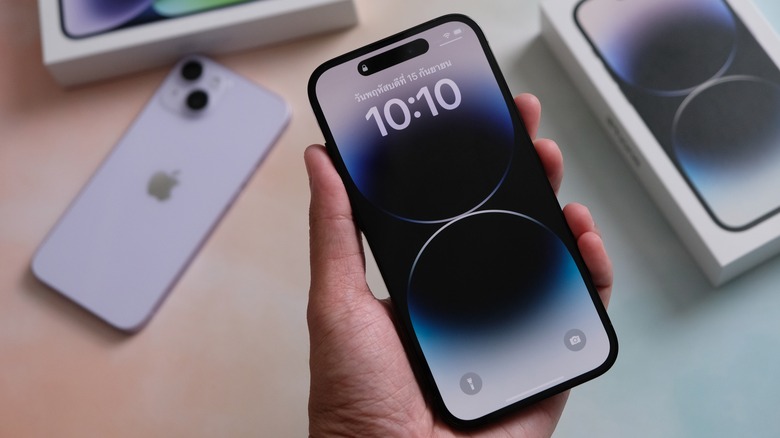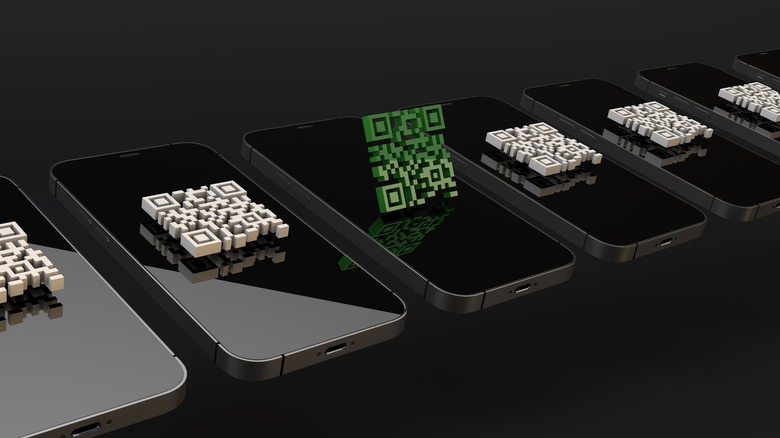The Secret Tracking Code Apple Adds To Every iPhone (And What It's For)
iPhones go through several quality control checks before they make it to market, and these checks apply to the final product as well as individual components. The iPhone's parts are sourced from various countries and are then shipped and assembled in different locations. The parts include the outer casing, display, processor, battery, flash memory, cameras, 5G modem, and Wi-Fi module, among others.
Apple relies on third-party suppliers for these components and, like with any manufacturing process, loses a small percentage to defects. Apple has been using barcodes on many of the iPhone's components for a while now, enabling the company to trace their origins and track the rate of defects. These barcodes are primarily used on internal components and aren't visible unless the iPhone is opened up and taken apart.
A report by The Information now reveals that Apple has also been using barcodes to track iPhone cover displays since 2020. While the barcodes are printed on the screen, they're so minuscule that they're invisible to the naked eye.
Why Apple uses hidden barcodes on iPhone screens
The iPhone's glass cover displays are made by two Chinese suppliers, Lens Technology and Biel Technology. The Information claims that the suppliers had previously hindered Apple's attempts at learning the real rate of defective displays. As a result, Apple began putting microscopic QR codes on the glass to find out how many usable displays were actually being made.
Printing the QR codes was a difficult process for Apple, with the initial codes weakening the screen to the extent that the glass always cracked in the location of the QR codes in drop tests. As a result, Apple engineers had to develop a new scanning technique using microscopic lenses paired with ring lights.
There are two QR codes on the iPhone's screen: one is the size of a grain of sand and can only be viewed with special equipment. The other is the size of a crayon's tip and is printed on the back of the glass, hidden along the black border or bezel. These codes are added during different stages of the manufacturing process.
Apple reportedly spent millions of dollars on laser and scanning equipment at Lens and Biel factories, where the codes are printed and scanned at the end of the manufacturing process. However, that investment has paid off. Before the QR codes were introduced, three in 10 glass covers (30%) were being discarded, and that number is now down to one in 10 (10%), saving Apple hundreds of millions of dollars.

